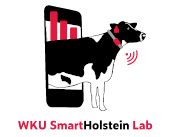|
|||||||||





|
New Haplotype Impacting Fertility Reported in December 2018 A new Haplotype Impacting Fertility (HH6) was discovered by French researchers, and first reported on at the 2018 International Committee for Animal Recording (ICAR) meeting. HH6 results will be delivered by the Council on Dairy Cattle Breeding (CDCB) with the other haplotypes starting in December 2018, and results will be available for all genomic tested animals at that time. Holstein breeders may find the status of their animals using the Family Tree Search on the HAUSA web site, or Enlight® users may also find the information there. The current frequency of HH6 in U.S. data is 0.5 percent, according to CDCB data. French researchers traced HH6 back to BIS-MAY S-E-L MOUNTAIN-ET (USA M 2070579), and USDA-AGIL researchers traced HH6 back further to his maternal grandsire CAL-CLARK BOARD CHAIRMAN (USA M 1723741), then four generations further back to GRAY VIEW SKYLINER (USA M 1244845), born in 1954. The fertility effects of HH6 were confirmed using CDCB data from 371 carrier sire x carrier maternal grandsire matings, with a larger than expected 9% +/- 2% drop in conception rate. Going forward, HH6 will be included in HAUSA genomic reports for all newly tested animals at no additional charge, alongside the other haplotypes impacting fertility that are currently reported. Holstein Association USA encourages breeders to pay attention to pedigrees, work to learn the status of their animals, and be mindful of the status of service sires in their herd. The bottom line is, to reduce negative impacts on conception rate from these haplotypes, avoid carrier-by-carrier matings. All of the haplotypes impacting fertility, including HH6, should be treated as separate traits, independent from one another; e.g., for HH6 to cause embryonic or fetal death, the embryo would have to inherit the HH6 haplotype from both the dam and sire. You can find more information about HH6 on the Council on Dairy Cattle Breeding web site, www.uscdcb.com, under What's New, then News, in their November 14, 2018 article on CDCB changes to evaluation system (December 2018).
|
||||||||
|
|
|||||||||

